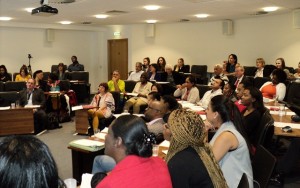
On October 14, local organisations, residents, staff and students from BU and other universities gathered at the Executive Business Centre for the Black History Month Soiree on Racial and Ethnic Diversity and Equality in Sport and Classical Music. The event was co-hosted by BU Equality and Diversity and Black British Academics, an independent organisation working to enhance race equality in the higher education sector.
Its founder and Chief Executive, Dr Deborah Gabriel, is a lecturer in the faculty of Media and Communication and she designed the programme to highlight the contribution Black academics make to the global knowledge economy, to showcase the fusion of practice and research for social change and to promote collaboration among staff, students and local organisations.
Dr Gabriel said: “My aim was to unite staff and students with local organisations to build engagement, promote co-creation in research and practice and collaboration on equality initiatives. I also think it’s important to acknowledge how Black academics are pushing the boundaries of knowledge while helping to build a fairer and more just society.”
Explaining why she chose sport and classical music as the theme for the event, Dr Gabriel said: “Football is the number one sport in Britain and issues around race and racism have been long-standing. Given that Bournemouth AFC have recently joined the Premier League, I think the focus is timely.”
Vincent Edwards from Bournemouth’s Kick-It-Out campaign spoke movingly about his 10-year campaign against racism in football and was joined by two teenage volunteers, who deliver anti-racism events in Bournemouth.
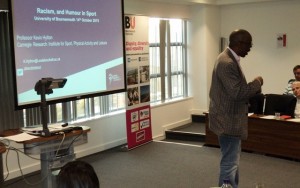
Kevin Hylton, Professor of Equality and Diversity in Sport from Leeds Beckett University (pictured left) shared narratives from Black and Asian football coaches extracted from his recent research on how humour is used to mediate against racial microaggressions.
Dr Gabriel delivered a presentation on pedagogies of social justice and cultural democracy, based on an evaluation of teaching materials and tailored workshops developed for a higher education institution to enhance race equality and inclusive teaching practice.
Dr Shirley Thompson, a reader in Music at Westminster University is a classical violinist and world famous classical composer, who in 2004 became the first woman in Europe to compose and conduct a symphony in the last 40 years.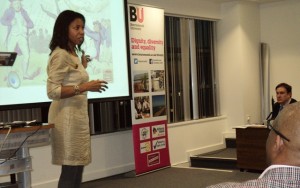
In her presentation, Heroines of the Opera: Democratizing the Art of Opera Writing and performance, Dr Thompson (pictured right) spoke about her creation of leading roles for females and developing stories around African Caribbean historical figures.
Carolyn Solomon-Pryce, Head of Equity, Diversity and Inclusion at the London School of Economics and Political Science said: “I am so pleased that I made the effort to attend what proved to be an insightful and thought provoking event.”
After the presentation, guests were treated to a Caribbean buffet while networking. Dr Gabriel used the occasion to discuss her upcoming research project on engagement with digital technologies by Black elders with local organisations, who expressed a keen interest in being involved.
David Corbin, Equality and Diversity Manager at Dorset Healthcare said the BHM Soiree was “an excellent and informative evening. There is still so much work to do in this field to get full recognition of the contribution Black people have made; not just to the UK but the world. There is still a lot to learn and by coming together in celebration, recognition and challenge – we can make a difference.”

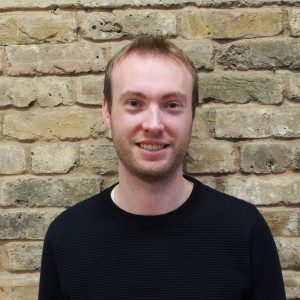
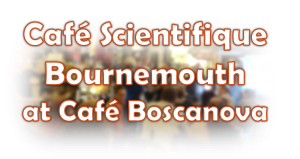

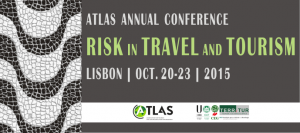
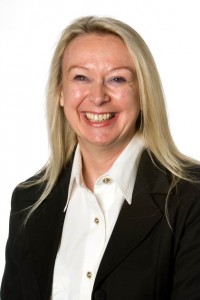

 To cope with the ‘wicked’ nature of problems within adult social care it is important that leaders are able to think beyond usual leadership and management approaches. ‘Wicked problems’ require ‘wicked solutions’, a break with the constraints of the past and an approach which embraces creativity. It requires individuals who can facilitate a collaborative approach to harness creativity across different stakeholders both internal and external to their organisation. It requires a style of leadership which is focused on participation rather than top down direction – that is inclusive, and supports engagement with collective ideas. Such leaders need to work with the resources within their own workforce by adopting ‘the moral resourcefulness’ to engage in challenging conversations (Hutchinson et al. 2015:3022). Only collective engagement within and across organisations can hope to address the ‘wicked problems’.
To cope with the ‘wicked’ nature of problems within adult social care it is important that leaders are able to think beyond usual leadership and management approaches. ‘Wicked problems’ require ‘wicked solutions’, a break with the constraints of the past and an approach which embraces creativity. It requires individuals who can facilitate a collaborative approach to harness creativity across different stakeholders both internal and external to their organisation. It requires a style of leadership which is focused on participation rather than top down direction – that is inclusive, and supports engagement with collective ideas. Such leaders need to work with the resources within their own workforce by adopting ‘the moral resourcefulness’ to engage in challenging conversations (Hutchinson et al. 2015:3022). Only collective engagement within and across organisations can hope to address the ‘wicked problems’.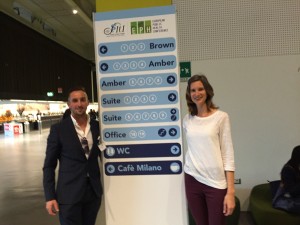

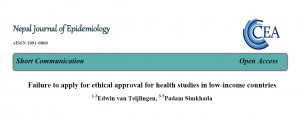

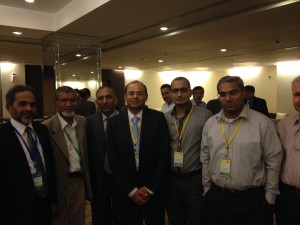
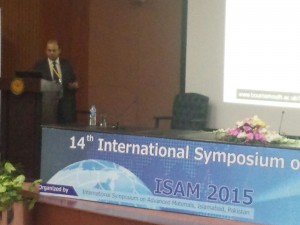
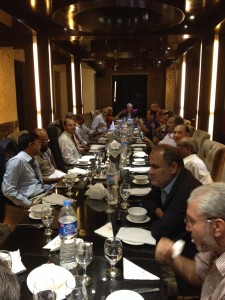
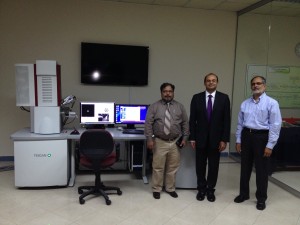
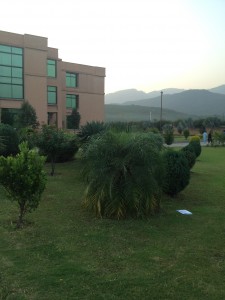 speaker and guest speaking at key universities and research institutes.
speaker and guest speaking at key universities and research institutes.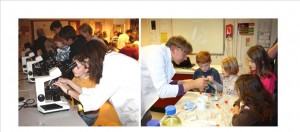



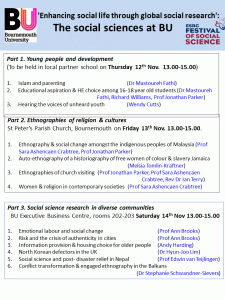

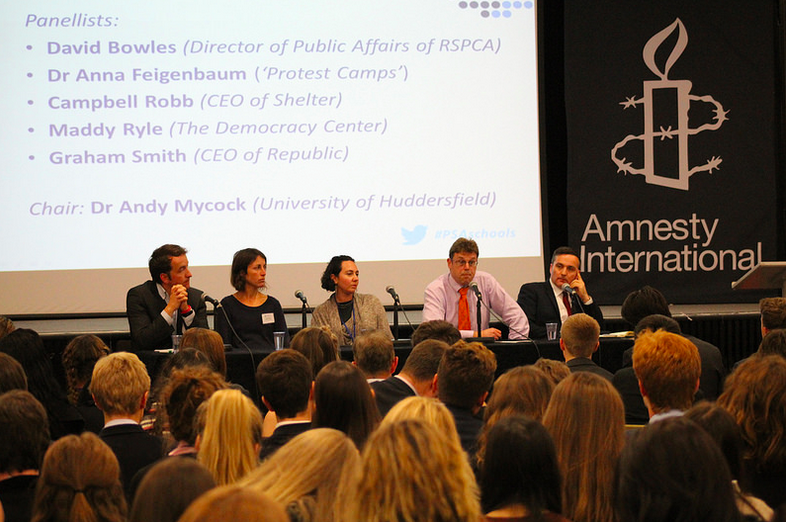
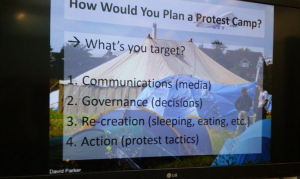
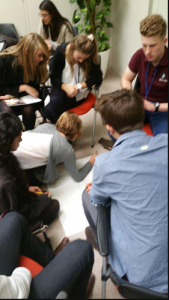
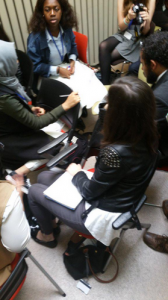
 of his participation in the event, Dr. Jackson – who also convenes the
of his participation in the event, Dr. Jackson – who also convenes the 










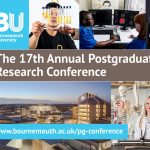 Join the 17th Annual Postgraduate Research Conference – Wednesday 3 December 2025
Join the 17th Annual Postgraduate Research Conference – Wednesday 3 December 2025 BU Festival of Social Sciences invite at RNLI
BU Festival of Social Sciences invite at RNLI MaGPIE Presents at UK Parliament: From Mass Graves to Courtroom
MaGPIE Presents at UK Parliament: From Mass Graves to Courtroom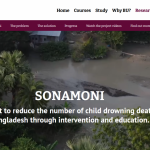 Festival of Social Science: Introducing drowning prevention in Bangladesh
Festival of Social Science: Introducing drowning prevention in Bangladesh BU PhD student attending HIV conference on scholarship
BU PhD student attending HIV conference on scholarship ECR Funding Open Call: Research Culture & Community Grant – Apply Now
ECR Funding Open Call: Research Culture & Community Grant – Apply Now MSCA Postdoctoral Fellowships 2025 Call
MSCA Postdoctoral Fellowships 2025 Call ERC Advanced Grant 2025 Webinar
ERC Advanced Grant 2025 Webinar Horizon Europe Work Programme 2025 Published
Horizon Europe Work Programme 2025 Published Horizon Europe 2025 Work Programme pre-Published
Horizon Europe 2025 Work Programme pre-Published Update on UKRO services
Update on UKRO services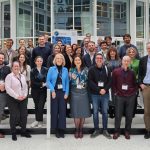 European research project exploring use of ‘virtual twins’ to better manage metabolic associated fatty liver disease
European research project exploring use of ‘virtual twins’ to better manage metabolic associated fatty liver disease